Uninstall .vvv File Extension virus (Uninstall Guide) - Recovery Instructions Included
.vvv File Extension virus Removal Guide
Description of .vvv File Extension virus
The essential information about .vvv File Extension virus
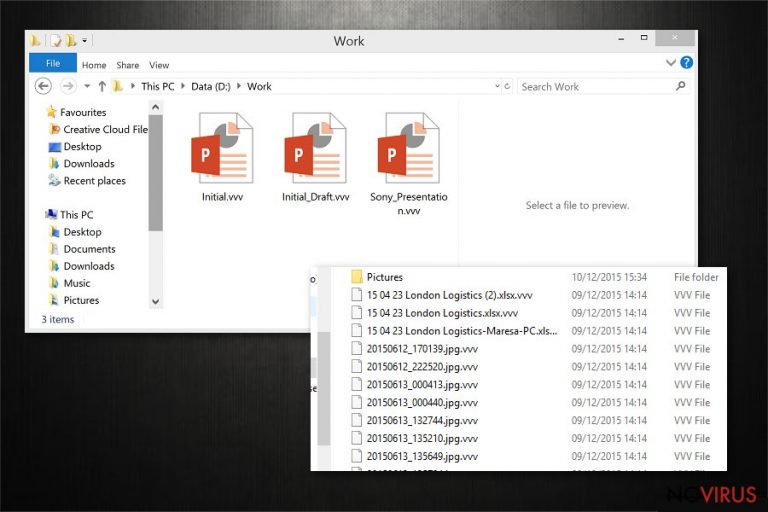
In case you have heard about .vvv File Extension virus, it signifies the fact that either you are infected with it or you have read about it on the news. This virus is deemed as ransomware which is capable of encrypting personal information stored on your computer. Later on, you spot a message emerging on your desktop disclosing unpleasant fact – all your files have been encrypted.
The developers of this virtual threat give you only one solution to retrieve the encrypted data – via paying the ransom. However, taking into account that this ransomware has already coaxed stunning amounts of money worldwide, we discourage from remitting the payment. Furthermore, you ought to remove .vvv File Extension virus immediately. In order to do that you’ll need an effective anti-spyware application, one of them might be FortectIntego.
How does the virus infect computers?
IT security specialists have observed that .vvv File Extension ransomware comes as another version of infamous TeslaCrypt virus. The latter malware has infected thousands of computers worldwide. It seems that cyber criminals are enjoying the fruits of their malicious deeds and keep releasing new viruses. .vvv File Extension virus happened to be one of them as well.
It infiltrates computers via infected email attachments. Beware of these attachments: CHECK.TXT, AWARD.TXT or PENALTY.TXT. If you spot one of these, do not open them! Cyber criminals are trying to create relevant emails to convince users of their credibility.
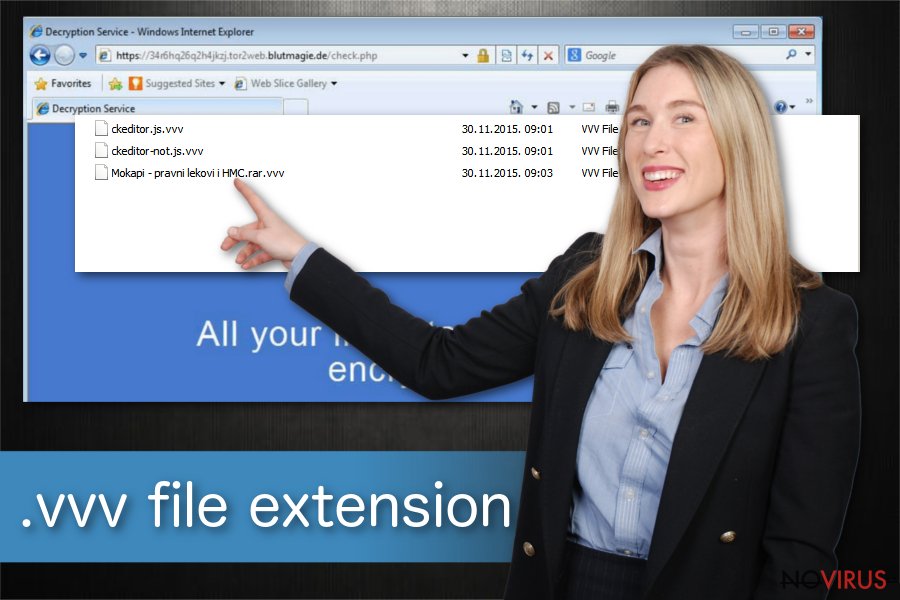
If you accidentally or deliberately open the attachment, .vvv File Extension activates itself and starts searching for the material for encryption. Personal as well as job related data is usually formatted as .doc .xml. .jpg, xls, .xlsx, .ppt, .pptx, .pptm, .pdf, .eps, .ai, .indd, .cdr, .dng, .lnk, .png, .pdd, .jfif, .jpeg, .gif, thus, the virus aims to encrypt such files.
After it succeeds in blocking them, it drops a message on your desktop informing of the encrypted data. At this point it is crucial to stay calm and restrain from reckless actions. Certainly, we strongly discourage from paying the ransom. There isn’t any reliable information whether users retrieved their data after making the transaction.
Furthermore, .vvv File Extension malware might also slip into a computer via trojans. These files are also known as ‘fileless infections’ or ‘exploit kits’. They are considered to be highly dangerous due to their technical characteristics to disguise themselves as legitimate files. After they slither into the operating system, they disperse ransomware. Therefore, it is a necessity to have a trustworthy anti-spyware program on the system. The software might be the only solution leading to complete .vvv File Extension removal.
Is it possible to remove .vvv File Extension virus?
First of all, if you haven’t backed up your files, you will need to come to terms with the loss of it. Secondly, you need to think of how you can delete the ransomware. Manual elimination might be wrong choice unless you are a programmer. If you still want to use manual guidelines, use the instructions developed by cyber security specialists. However, we offer a better solution – automatic .vvv File Extension removal.
After you scan the system and the software eliminates the virus, you need to check whether your anti-virus program functions properly. It has been observed that .vvv File Extension virus might have blocked some anti-virus software, so you need to be aware of that.
After your system is fully restored, back up your files with the help of ESET TeslaCrypt Decryptor. You can also use CD, DVD disks or USB sticks to replace damaged data. Finally, remember to be cautious of spam emails and false alerts.
Getting rid of .vvv File Extension virus. Follow these steps
In-depth guide for the .vvv File Extension elimination
Important! →
The elimination guide can appear too difficult if you are not tech-savvy. It requires some knowledge of computer processes since it includes system changes that need to be performed correctly. You need to take steps carefully and follow the guide avoiding any issues created due to improper setting changes. Automatic methods might suit you better if you find the guide too difficult.
Step 1. Launch Safe Mode with Networking
Safe Mode environment offers better results of manual virus removal
Windows 7 / Vista / XP
- Go to Start.
- Choose Shutdown, then Restart, and OK.
- When your computer boots, start pressing the F8 button (if that does not work, try F2, F12, Del, etc. – it all depends on your motherboard model) a few times until you see the Advanced Boot Options window.
- Select Safe Mode with Networking from the list.
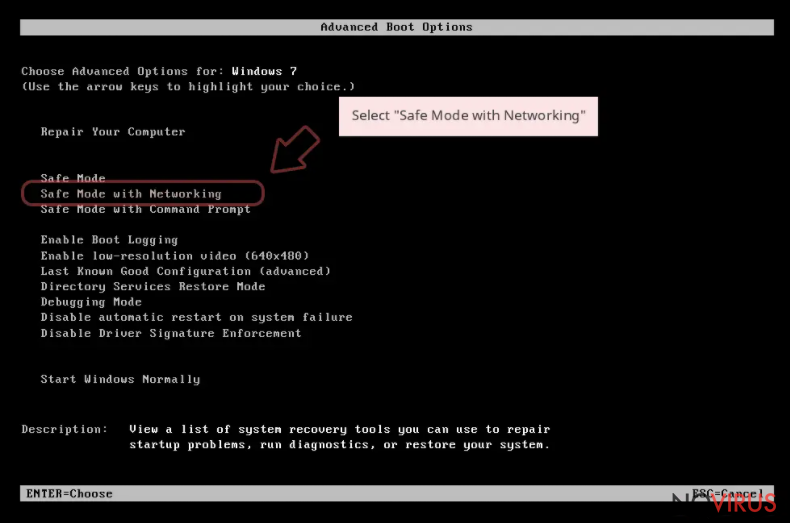
Windows 10 / Windows 8
- Right-click the Start button and choose Settings.
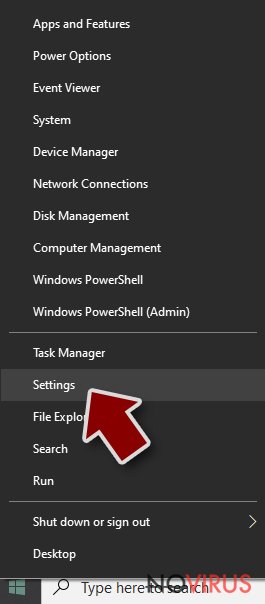
- Scroll down to find Update & Security.
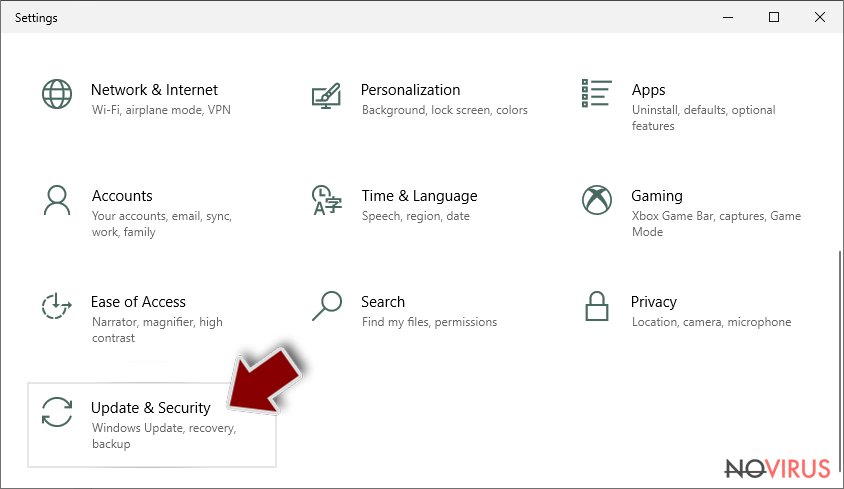
- On the left, pick Recovery.
- Scroll to find Advanced Startup section.
- Click Restart now.
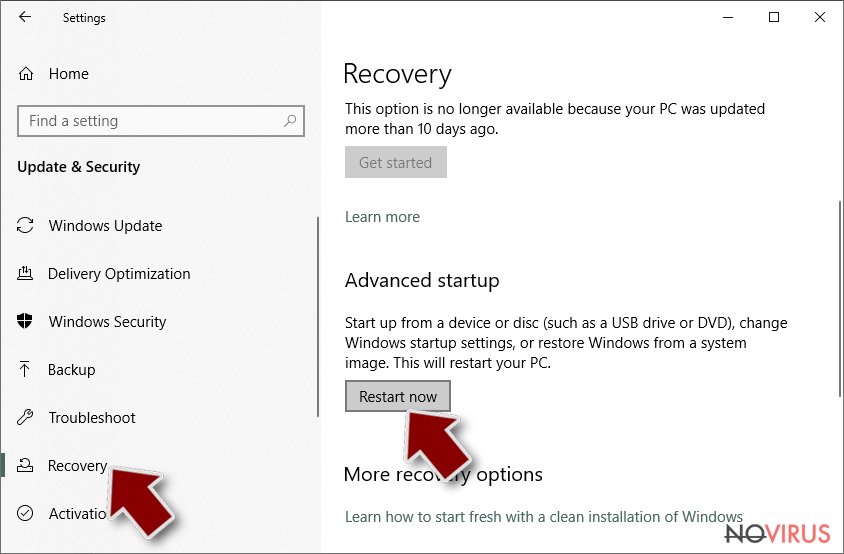
- Choose Troubleshoot.
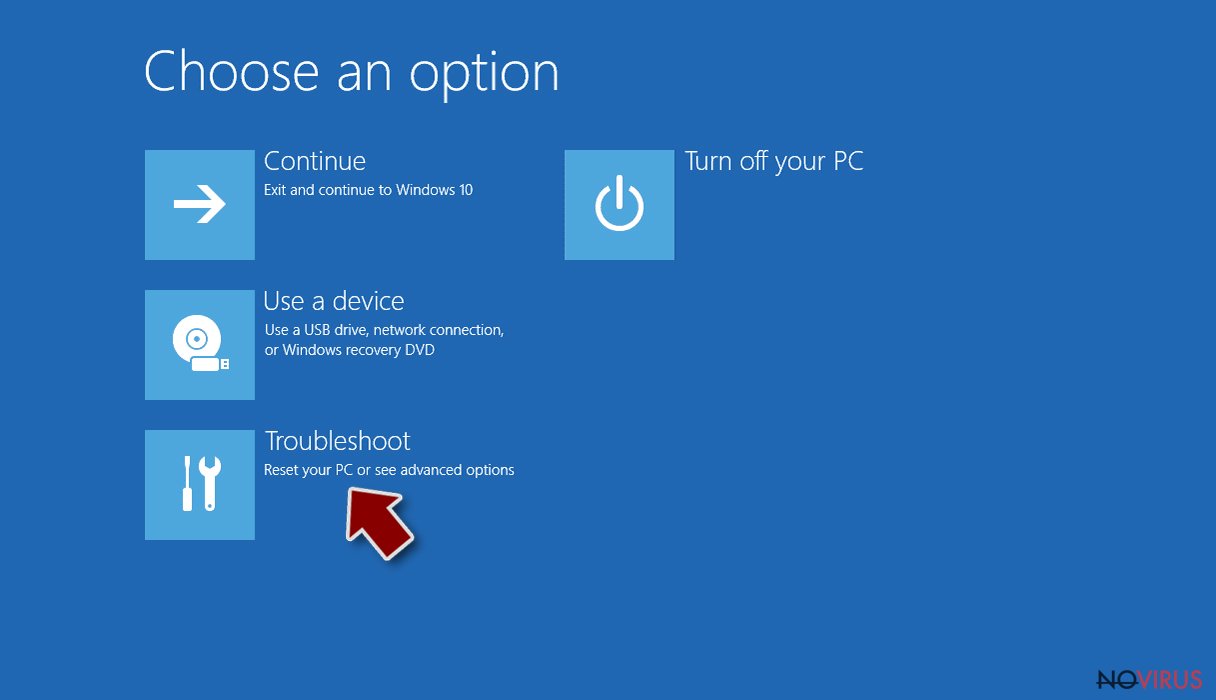
- Go to Advanced options.
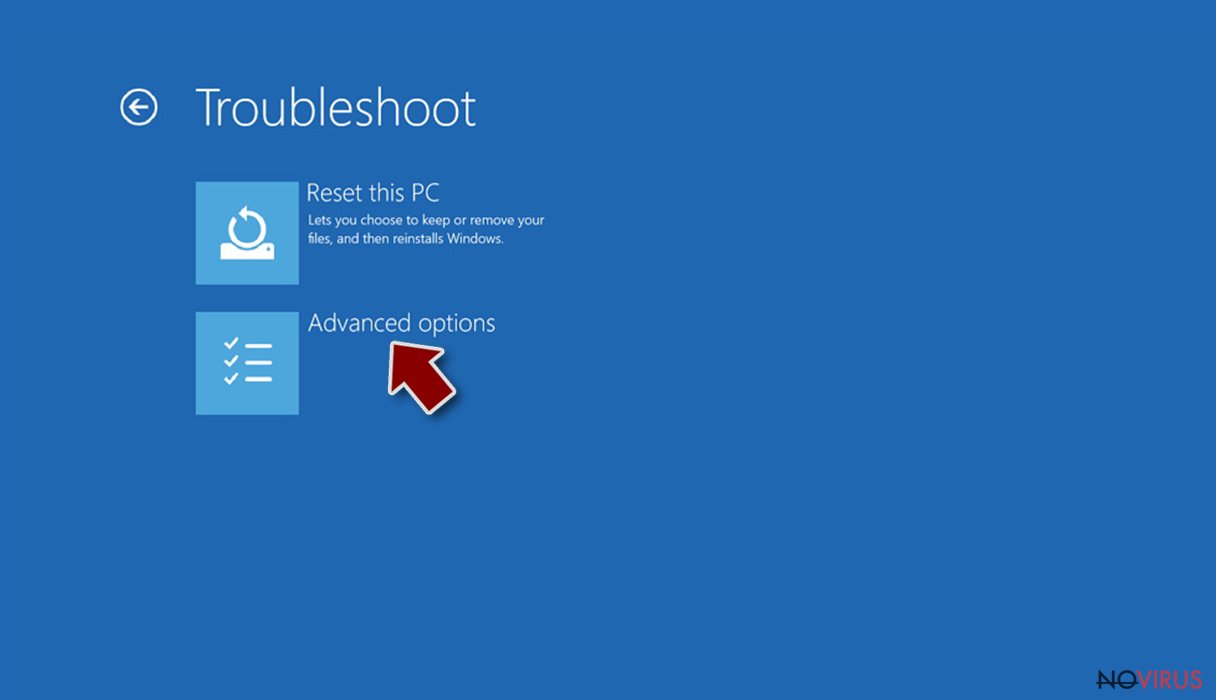
- Select Startup Settings.
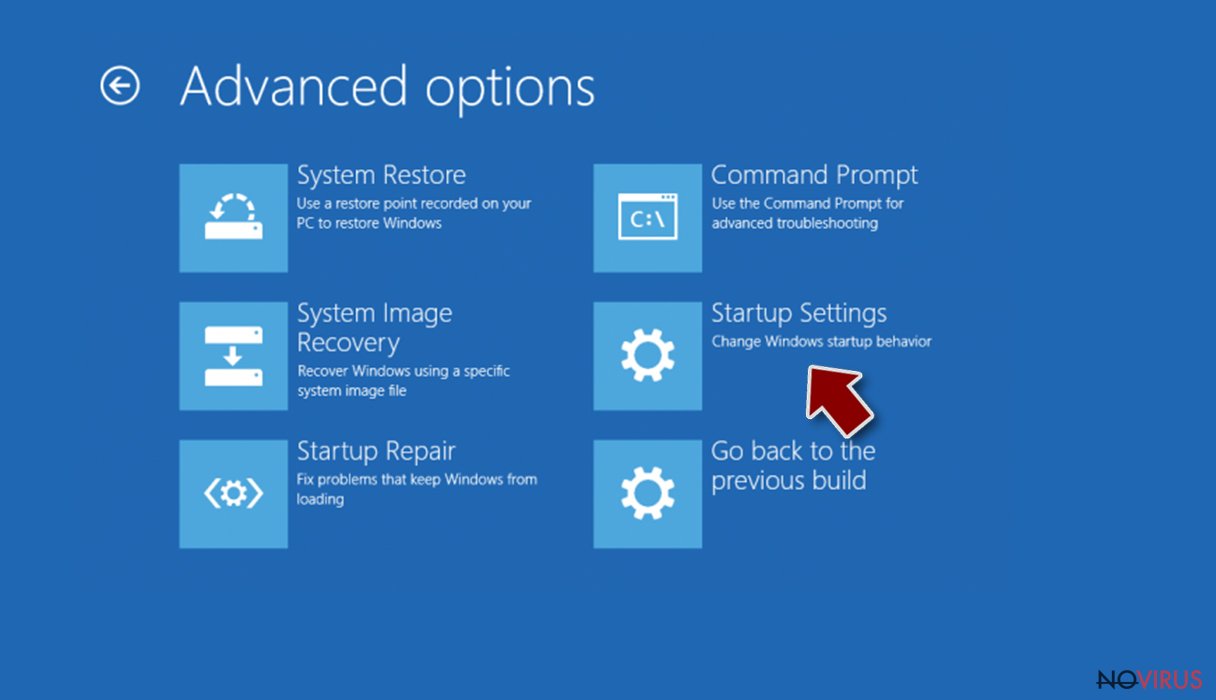
- Press Restart.
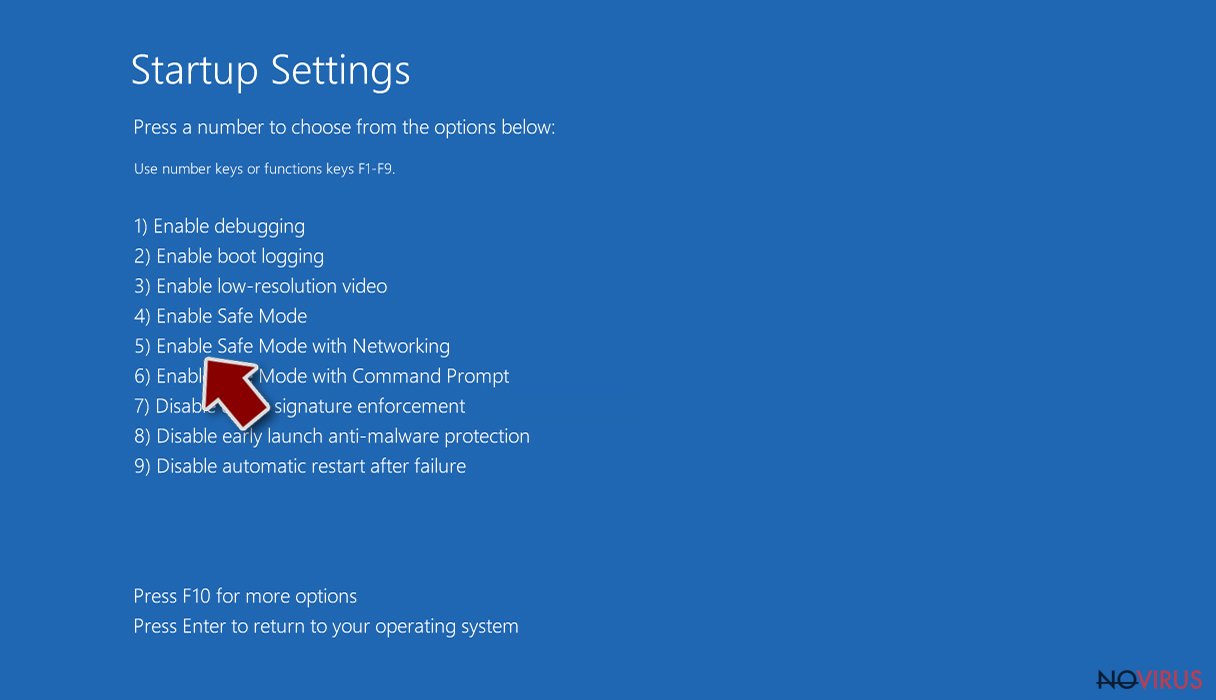
- Choose 5) Enable Safe Mode with Networking.
Step 2. End questionable processes
You can rely on Windows Task Manager that finds all the random processes in the background. When the intruder is triggering any processes, you can shut them down:
- Press Ctrl + Shift + Esc keys to open Windows Task Manager.
- Click on More details.
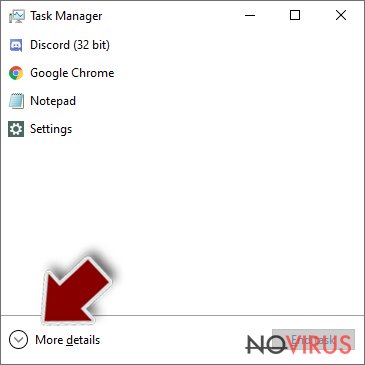
- Scroll down to Background processes.
- Look for anything suspicious.
- Right-click and select Open file location.
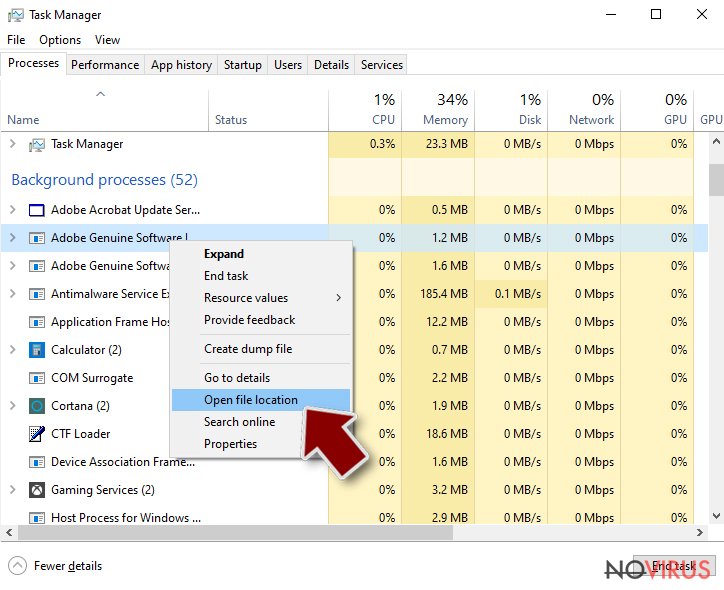
- Go back to the Process tab, right-click and pick End Task.
- Delete the contents of the malicious folder.
Step 3. Check the program in Startup
- Press Ctrl + Shift + Esc on your keyboard again.
- Go to the Startup tab.
- Right-click on the suspicious app and pick Disable.
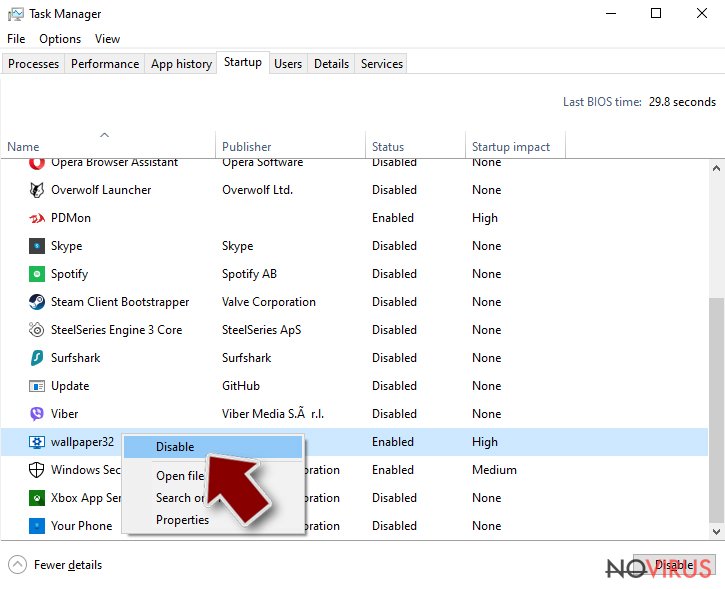
Step 4. Find and eliminate virus files
Data related to the infection can be hidden in various places. Follow the steps and you can find them:
- Type in Disk Cleanup in Windows search and press Enter.
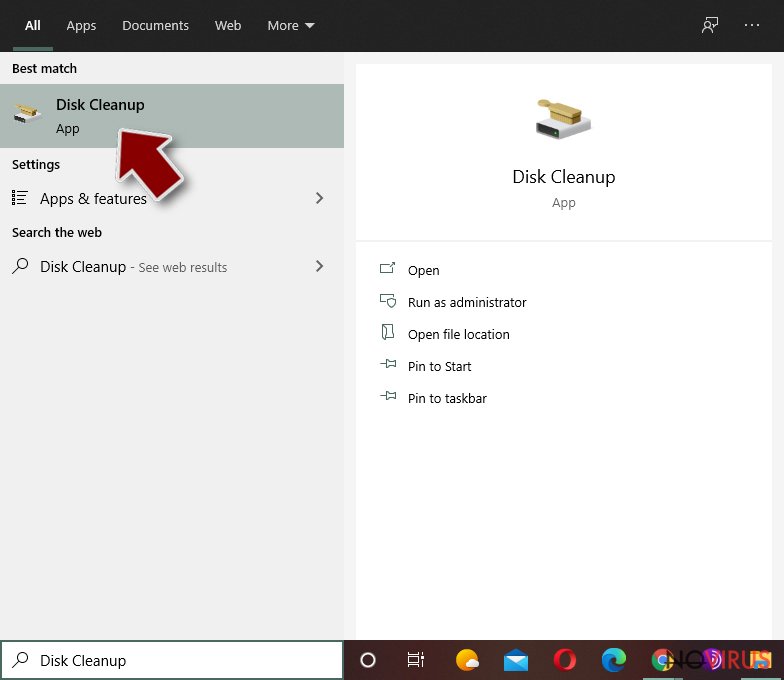
- Select the drive (C: is your main drive by default and is likely to be the one that has malicious files in) you want to clean.
- Scroll through the Files to delete and select the following:
Temporary Internet Files
Downloads
Recycle Bin
Temporary files - Pick Clean up system files.
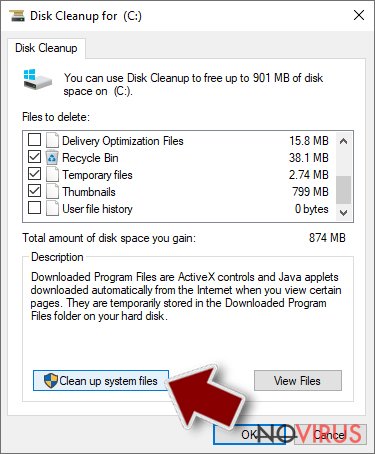
- You can also look for other malicious files hidden in the following folders (type these entries in Windows Search and press Enter):
%AppData%
%LocalAppData%
%ProgramData%
%WinDir%
After you are finished, reboot the PC in normal mode.
Eliminate .vvv File Extension using System Restore
-
Step 1: Restart your computer in Safe Mode with Command Prompt
Windows 7 / Vista / XP- Go to Start → Shutdown → Restart → OK.
- As soon as your computer starts, start pressing F8 key repeatedly before the Windows logo shows up.
-
Choose Command Prompt from the list

Windows 10 / Windows 8- Click on the Power button at the Windows login screen, and then press and hold Shift key on your keyboard. Then click Restart.
- Then select Troubleshoot → Advanced options → Startup Settings and click Restart.
-
Once your computer starts, select Enable Safe Mode with Command Prompt from the list of options in Startup Settings.

-
Step 2: Perform a system restore to recover files and settings
-
When the Command Prompt window appears, type in cd restore and press Enter.

-
Then type rstrui.exe and hit Enter..

-
In a new window that shows up, click the Next button and choose a restore point that was created before the infiltration of .vvv File Extension and then click on the Next button again.


-
To start system restore, click Yes.

-
When the Command Prompt window appears, type in cd restore and press Enter.
It is strongly recommended to take precautions and secure your computer from malware attacks. To protect your PC from .vvv File Extension and other dangerous viruses, you should install and keep a powerful malware removal tool, for instance, FortectIntego, SpyHunter 5Combo Cleaner or Malwarebytes.
How to prevent from getting ransomware
Prevent the government from spying on you
As there is a growing debate in government about collecting users' data and spying on citizens, you should take a closer look at this issue and find out what shady ways of gathering information can be used to collect information about you. You need to browse anonymously if you want to avoid any government-initiated spying and tracking of information.
You can enjoy secure internet browsing and minimize the risk of intrusion into your system if you use Private Internet Access VPN program. This VPN application creates a virtual private network and provides access to the required data without any content restrictions.
Control government and other third party access to your data and ensure safe web browsing. Even if you do not engage in illegal activities and trust your ISP, we recommend being careful about your security. You should take extra precautions and start using a VPN program.
Reduce the threat of viruses by backing up your data
Due to their own careless behavior, computer users can suffer various losses caused by cyber infections. Viruses can affect the functionality of the software or directly corrupt data on your system by encrypting it. These problems can disrupt the system and cause you to lose personal data permanently. There is no such threat if you have the latest backups, as you can easily recover lost data and get back to work.
It is recommended to update the backups in parallel each time the system is modified. This way, you will be able to access the latest saved data after an unexpected virus attack or system failure. By having the latest copies of important documents and projects, you will avoid serious inconveniences. File backups are especially useful if malware attacks your system unexpectedly. We recommend using the Data Recovery Pro program to restore the system.







